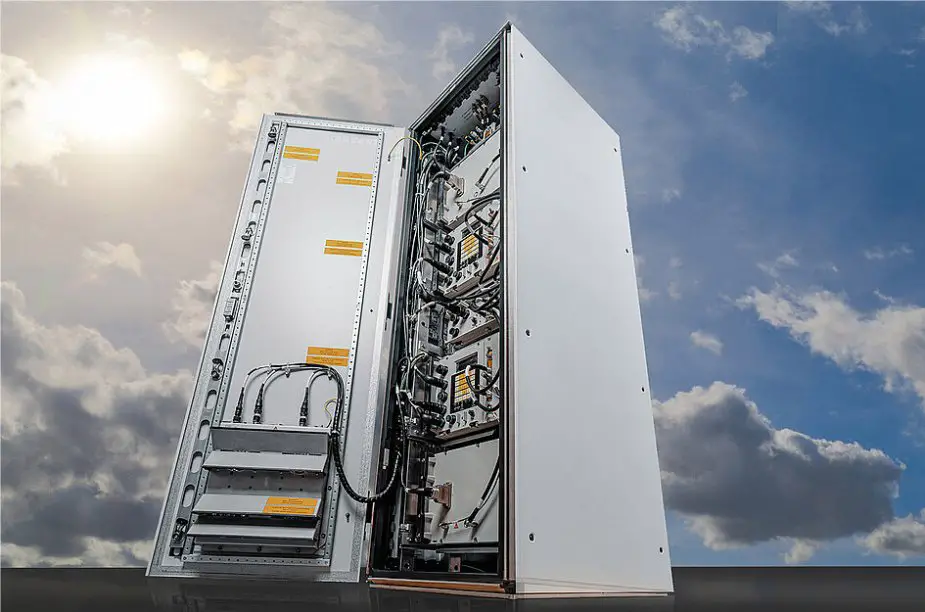According to a press release published by Hensoldt on July 28, 2021, as part of the modernisation of all NATO identification-friend-or-foe (IFF) systems to the particularly secure new "Mode 5" standard, sensor solution provider HENSOLDT is equipping air surveillance radars of the German Air Force with the latest generation of IFF systems.
Follow Air Recognition on Google News at this link
 HENSOLDT secondary radar MSSR 2000 ID (Picture source: Hensoldt)
HENSOLDT secondary radar MSSR 2000 ID (Picture source: Hensoldt)
As part of an order from the Federal Office of Bundeswehr Equipment, Information Technology, and In-Service Support, BAAINBw, HENSOLDT is supplying secondary radar systems and individual components worth several million euros.
IFF systems are of central importance for all military operations. Based on automated electronic signals, they ensure that friendly units such as ships or aircraft are detected or identified at an early stage by responding to interrogation signals with the correct signal. Potentially hostile units that do not respond can thus be delineated. This is particularly important when forces are operating together to avoid the mistaken firing of friendly forces – so-called "friendly fire" incidents.
All NATO countries are currently converting their IFF systems to the latest Mode 5 standard, which uses advanced cryptographic techniques to secure against electronic jamming by adversaries.
HENSOLDT is one of the few European suppliers able to deliver both certified IFF devices of the latest technology and the corresponding encryption computers. More than a thousand IFF devices, such as the MSSR 2000 ID secondary radar and the LTR-400 transponder, are in service with NATO and partner nations. The company also offers integration and testing services as well as support in the certification of IFF equipment according to the specifications of the American IFF authority AIMS.
Identification, friend or foe (IFF) is a radar-based identification system designed for command and control. It uses a transponder that listens for an interrogation signal and then sends a response that identifies the broadcaster.
It enables military and civilian air traffic control interrogation systems to identify aircraft, vehicles or forces as friendly and to determine their bearing and range from the interrogator. IFF may be used by both military and civilian aircraft. IFF was first developed during World War II, with the arrival of radar, and several friendly fire incidents.
















